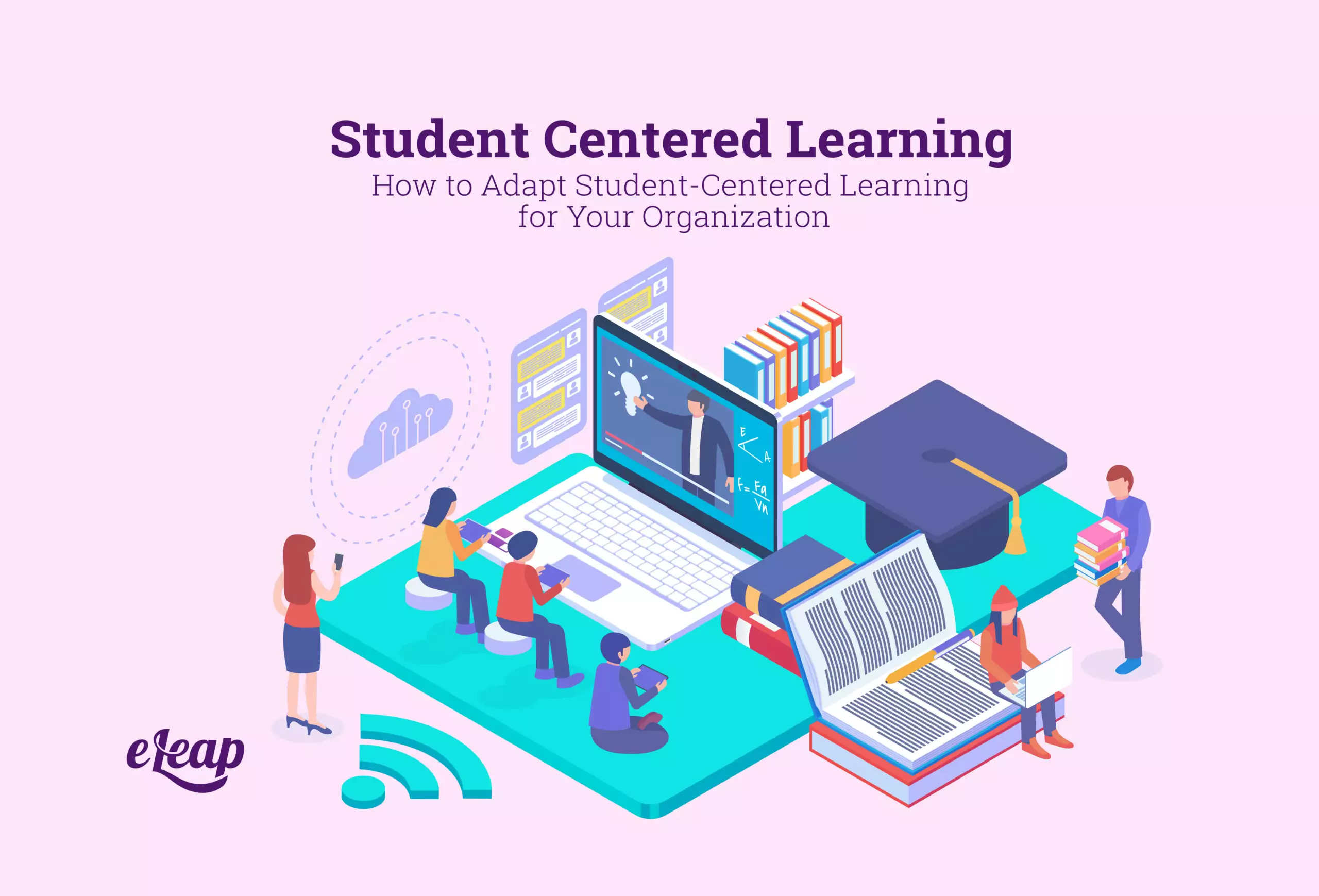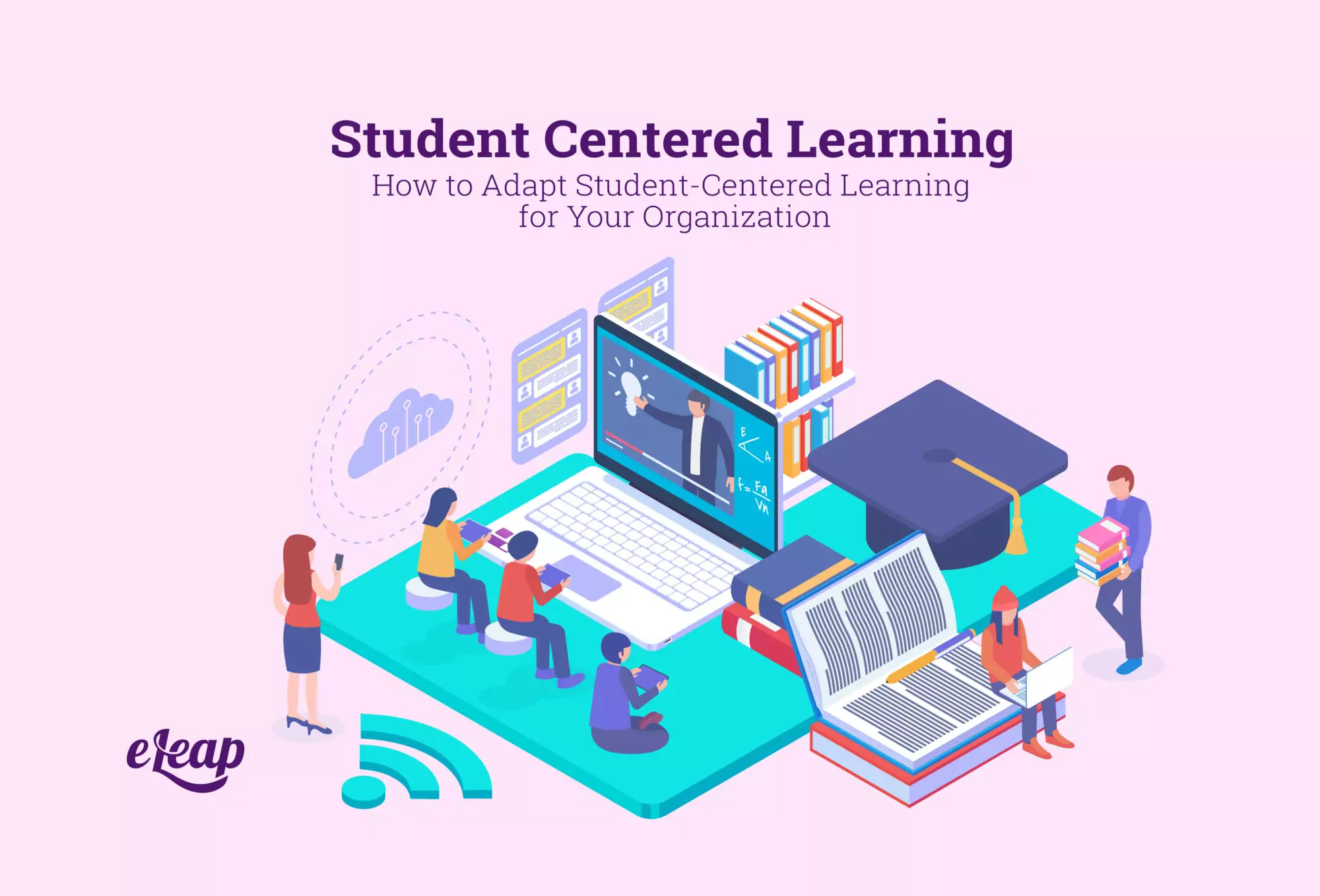Student Centered Learning
How to Adapt Student-Centered Learning for Your Organization

One modern approach to teaching that has been creating a lot of buzz recently is student-centered learning. As a classroom technique, this teaching style is radically different from what you were probably familiar with growing up. The students themselves choose what to study, why they are studying it, and how they learn.
Student-centered learning has been implemented in a few schools across the United States and has been met with mixed opinions. Taking the control away from instructors and putting it directly into the learners’ hands can have many pros and cons. But let’s consider this from the point of view of your office place.
Working with adults is very different from teaching children. Allowing your employees to decide what they want to learn, determine the motivation behind their learning goals, and choose how they will absorb the information can be a fantastic way to encourage a continuous learning culture.

Where Does Student-Centered Learning Come From?
Despite being a hot topic today, student-centered learning is a few decades in the making. The most cited study on this technique comes from 1983. The crucial aspects noted in this study are:
- That students choose how they will learn, and
- That students choose why they learn what they learn.
These two points are what truly set this type of learning apart from others. The reasons for these points reveal that students found it easier to retain knowledge and apply it to their adult lives later when they felt their studies were more relevant to their lives and interests.
This is a very engaging type of learning that asks students to not only do the learning but also to do the designing of their own curriculum. In this model, the teacher is no longer an instructing figure but instead acts as a collaborator and guide. Teachers help the students make the decisions about what, how, and why to study – but the ultimate choices are up to the learners.
Another thing noted in this 1983 study was the increased confidence students felt. By empowering students to make their own choices when it comes to student centered learning, the institutions saw considerable increases in their boldness. For example, many chose to study far deeper into topics than their grade levels would have previously allowed.
Allowing learners to choose how they learn also ensures that the knowledge is retained. Some people learn best by reading and writing, while others learn best by doing practice projects. Some may choose a hybrid approach, where they listen to a webinar, do a few practice projects, and then go on to read a book on the topic for more information.
Adapting Student-Directed Learning for the Workplace
You may have heard of student-directed learning, but how do you take this technique into the workplace? Will employees learn valuable skills for the job if you aren’t offering them a curriculum that you’ve vetted?
The first place to start is to understand the definitions of “learners” and “instructors” in this type of training.
Learners actively make decisions about what, why, and how they will learn. They assess their current skills and knowledge and choose goals that build on their weaknesses. They are encouraged to do this self-assessment – after all, they know themselves better than anyone.
But they don’t only work on their own. Learners also pair up, work in groups, and produce work to demonstrate their growing skills.
Instructors in student-directed learning take on more of a mentoring role in the office. Instead of directing the training, they will listen to the learner’s struggles and point out possible solutions. They’ll provide access to resources and encourage learners to use them. And they’ll mediate group discussions among teams.
One new method in the workplace for encouraging this type of learning is to create an executive-level leader dedicated to this role. The “Chief Learning Officer” is a role that can pay close attention to how well employees are making and meeting their educational goals. This person can also help guide decisions on what is being learned so that the organization’s needs as a whole are being met.
Once you understand how to shift your role in this dynamic, the idea becomes easier to envision in the office.
Methods for Using Student-Directed Learning
Because student-directed learning is an unstructured technique, the way you implement it will be entirely personal to each employee. However, here are some methods you can use for your team to help start them down this path:
- Be sure to help your employees manage their time. Create dedicated monthly or weekly blocks for learning so that educational goals can be met.
- Offer projects, cross-training, and other tasks that align with what employees are learning.
- Ask questions about what each team member is studying. When someone can explain in their own words what they are learning, they are far more likely to retain the information. This also allows you to keep up with what skills are being developed and to spot any holes that should be addressed in the team’s knowledge.
- Include opportunities for mentoring and peer-to-peer teaching.
- Be sure to offer resources that your team can take advantage of when choosing their training goals. Access to professional tools, software, networks, and journals can help when you aren’t using a formal curriculum.
When implementing these ideas, start slowly. Offer just one change at a time while employees become comfortable with the idea of setting and achieving their own educational goals.
How Effective is Student-Directed Learning in the Office?
In a 2019 survey from Deloitte, over 75% of employers reported that they would rather invest in their existing staff than hire new talent. But outdated training methods that don’t address individual needs and learning styles don’t allow this to happen. A learner-centered approach to training is a modern solution to this problem.
The benefits of this type of program for the employees themselves are endless. They’ll feel more empowered, more motivated to succeed, and better trained in the long run. This boosted confidence will mean higher rates of productivity, better customer service, and more expert solutions being brought to your table.